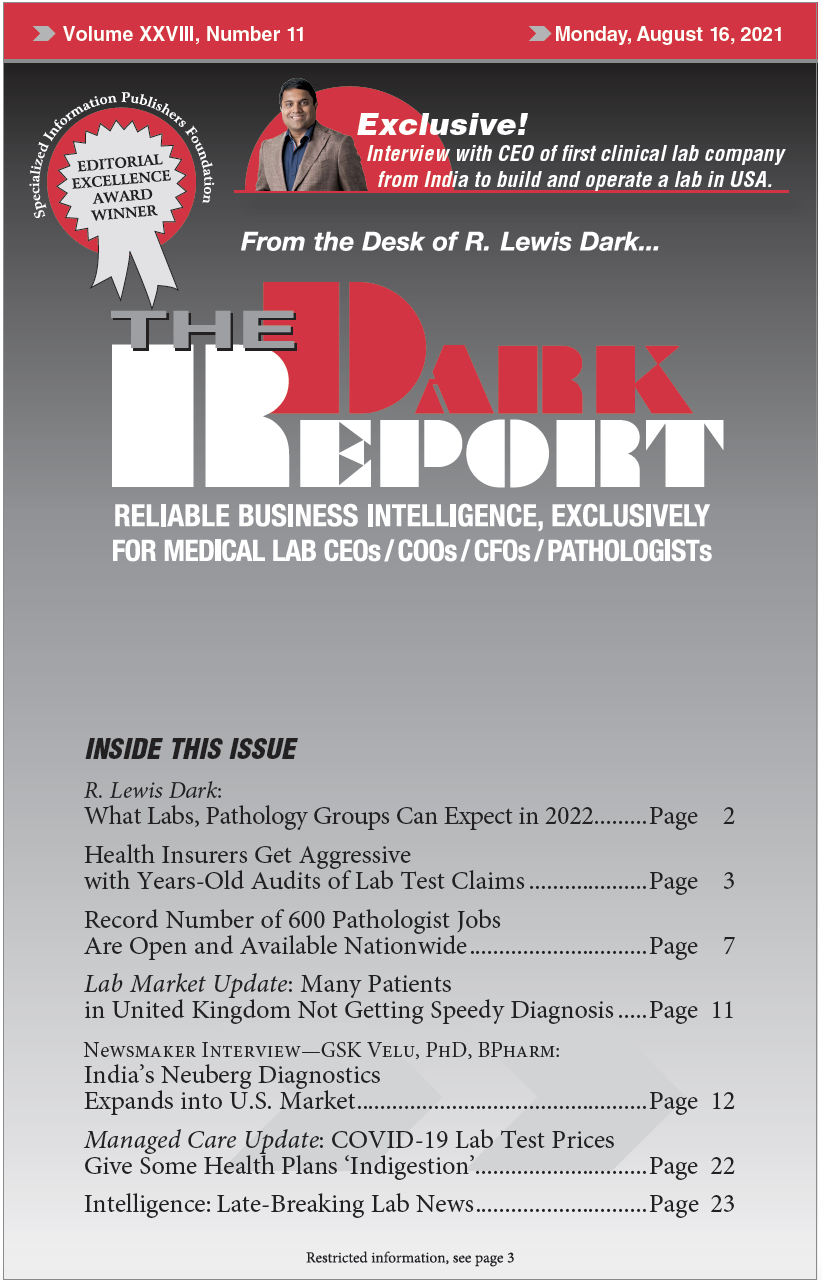CEO SUMMARY: Demand for top-level pathologists is surging. A strong rise in the number of job openings for pathologists results from a combination of factors, some related to COVID-19. Now that physicians are seeing patients again, the number of specimens has risen after falling last year, creating demand for new hires, a consultant said. The …
Record 600 Pathologist Jobs Open Nationwide Read More »
To access this post, you must purchase The Dark Report.


